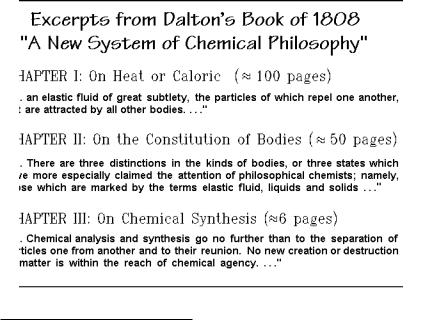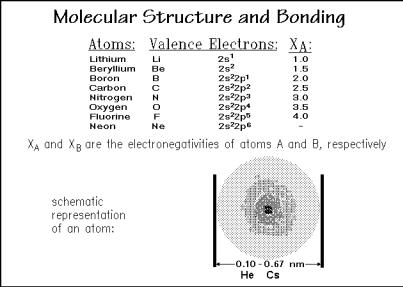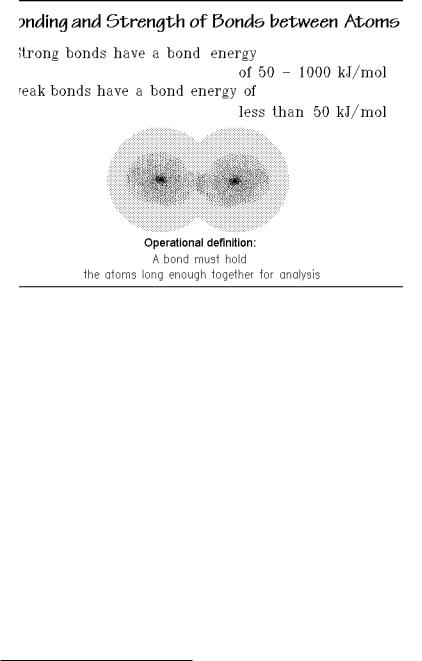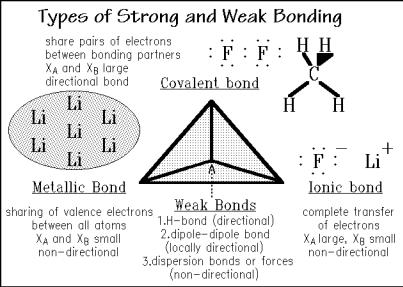
Thermal Analysis of Polymeric Materials
.pdfXII Contents
__________________________________________________________________
3.6.4 |
Growth of Spherulites ........................................................................... |
259 |
3.6.5 |
Avrami Equation ................................................................................... |
260 |
3.6.6 |
Nonisothermal Kinetics ........................................................................ |
263 |
3.6.7 |
Experimental Data ................................................................................ |
264 |
|
References ......................................................................................... |
276 |
4Thermal Analysis Tools
4.1Thermometry and Dilatometry
4.1.1 Principle and History of Thermometry ................................................. |
279 |
|
4.1.2 |
Liquid-in-glass Thermometers .............................................................. |
283 |
4.1.3 Resistance Thermometers and Thermocouples ..................................... |
285 |
|
4.1.4 |
Applications of Thermometry ............................................................... |
290 |
4.1.5 Principle and History of Dilatometry .................................................... |
291 |
|
4.1.6 Length, Volume, and Density Measurement ......................................... |
293 |
|
4.1.7 |
Applications of Dilatometry ................................................................. |
298 |
4.2Calorimetry
4.2.1 |
Principle and History ............................................................................ |
304 |
4.2.2 Isothermal and Isoperibol Calorimeters ................................................ |
307 |
|
4.2.3 |
Loss Calculation ................................................................................... |
310 |
4.2.4 |
Adiabatic Calorimetry ........................................................................... |
312 |
4.2.5 |
Compensating Calorimeters .................................................................. |
314 |
4.2.6 |
Modern Calorimeters ............................................................................ |
317 |
4.2.7 |
Applications of Calorimetry ................................................................. |
319 |
|
Purity analysis ................................................................................... |
319 |
|
Thermochemistry .............................................................................. |
320 |
|
Thermodynamic functions of three allotropes of carbon ................... |
325 |
|
Thermodynamic functions of paraffins ............................................. |
327 |
4.3Differential Scanning Calorimetry
4.3.1 |
Principle and History ............................................................................ |
329 |
4.3.2 |
Heat-flux Calorimetry ........................................................................... |
331 |
4.3.3 |
Power Compensation DSC ................................................................... |
335 |
4.3.4 |
Calibration ............................................................................................ |
338 |
4.3.5 |
Mathematical Treatment ....................................................................... |
340 |
4.3.6 DSC Without Temperature Gradient .................................................... |
344 |
|
4.3.7 |
Applications .......................................................................................... |
349 |
|
Heat capacity ..................................................................................... |
349 |
|
Finger printing of materials ............................................................... |
350 |
|
Quantitative analysis of the glass transition ...................................... |
354 |
|
Quantitative analysis of the heat of fusion ........................................ |
355 |
4.4Temperature-modulated Calorimetry
4.4.1 Principles of Temperature-modulated DSC .......................................... |
359 |
|
4.4.2 |
Mathematical Treatment ....................................................................... |
362 |
4.4.3 Data Treatment and Modeling .............................................................. |
369 |
|
4.4.4 |
Instrumental Problems .......................................................................... |
373 |
4.4.5 |
Heat Capacity Measurement ................................................................. |
385 |
4.4.6 |
Glass Transition Measurement ............................................................. |
388 |
Contents XIII
__________________________________________________________________
4.4.7 |
First-order Transition Analysis ............................................................. |
396 |
4.4.8 |
Chemical Reactions .............................................................................. |
402 |
4.5Thermomechanical Analysis, DMA and DETA
4.5.1 |
Principle of TMA ................................................................................. |
404 |
4.5.2 |
Instrumentation of TMA ....................................................................... |
406 |
4.5.3 |
Applications of TMA ............................................................................ |
408 |
4.5.4 Principles and Instrumentation of DMA ............................................... |
412 |
|
4.5.5 |
Applications of DMA ........................................................................... |
419 |
4.5.6 |
DETA ................................................................................................... |
424 |
4.6Thermogravimetry
4.6.1 |
Principle and History ............................................................................ |
428 |
4.6.2 |
Instrumentation ..................................................................................... |
430 |
4.6.3 |
Standardization and Technique ............................................................. |
437 |
4.6.4 |
Decomposition ...................................................................................... |
438 |
4.6.5 Coupled Thermogravimetry and Differential Thermal Analysis .......... |
439 |
|
4.6.6 |
Applications of Thermogravimetry ....................................................... |
443 |
|
Calcium oxalate/carbonate decomposition ........................................ |
444 |
|
Lifetime prediction ............................................................................ |
446 |
|
Summary of Chapter 4 ...................................................................... |
448 |
|
References ......................................................................................... |
450 |
5Structure and Properties of Materials
5.1Crystal Structure
5.1.1 |
Introduction .......................................................................................... |
455 |
5.1.2 |
Lattice Description ............................................................................... |
457 |
5.1.3 |
Unit Cells .............................................................................................. |
457 |
5.1.4 |
Miller Indices ........................................................................................ |
458 |
5.1.5 |
Symmetry Operations ........................................................................... |
460 |
5.1.6 |
Helices .................................................................................................. |
463 |
5.1.7 |
Packing in Crystals ............................................................................... |
468 |
5.1.8 |
Packing of Helices ................................................................................ |
471 |
5.1.9 |
Selected Unit Cells ............................................................................... |
474 |
5.1.10 |
Isomorphism ......................................................................................... |
481 |
5.1.11 |
Crystals with Irregular Motifs .............................................................. |
483 |
5.2Crystal Morphology
5.2.1 |
Crystal Habit ......................................................................................... |
486 |
5.2.2 |
Molecular Macroconformation ............................................................. |
486 |
5.2.3 |
Fold Length .......................................................................................... |
488 |
5.2.4 |
Lamellar Crystals .................................................................................. |
493 |
5.2.5 |
Dendrites and Spherulites ..................................................................... |
497 |
5.2.6 |
Fibers .................................................................................................... |
503 |
5.2.7 |
Isometric Crystals ................................................................................. |
508 |
5.3Defects in Polymer Crystals
5.3.1 |
Materials Properties .............................................................................. |
512 |
5.3.2 |
Crystallinity Analysis ........................................................................... |
512 |
5.3.3 Summary of Defect Types .................................................................... |
516 |
|
XIV Contents
__________________________________________________________________
5.3.4 Supercomputer Simulation of Crystal Defects ...................................... |
524 |
|
5.3.5 |
Deformation of Polymers ...................................................................... |
530 |
5.3.6 |
Ultimate Strength of Polymers .............................................................. |
533 |
5.4Transitions and Prediction of Melting
5.4.1 |
Transitions of Macromolecules ............................................................. |
536 |
5.4.2 Crystals of Spherical Motifs ................................................................. |
538 |
|
5.4.3 Crystals of Non-spherical Motifs .......................................................... |
541 |
|
5.4.4 Crystals of Linear Hydrocarbons .......................................................... |
542 |
|
5.4.5 |
Crystals of Macromolecules ................................................................. |
544 |
5.5Mesophases and Their Transitions
5.5.1 |
Multiple Transitions .............................................................................. |
547 |
5.5.2 |
Classes of Mesophases ......................................................................... |
551 |
5.5.3 |
Jump-motion in Crystals ....................................................................... |
555 |
5.5.4 |
Conformational Disorder ...................................................................... |
558 |
5.5.5 |
Examples .............................................................................................. |
561 |
|
Summary of the section on morphology ............................................ |
571 |
5.6Melts and Glasses
5.6.1 Structure of the Amorphous Phase ........................................................ |
572 |
|
5.6.2 Properties of the Amorphous Phase ...................................................... |
574 |
|
5.6.3 |
Viscosity ............................................................................................... |
575 |
5.6.4 |
Energy Elasticity ................................................................................... |
578 |
5.6.5 |
Entropy Elasticity ................................................................................. |
579 |
5.6.6 |
Viscoelasticity ...................................................................................... |
583 |
|
References ......................................................................................... |
586 |
6Single Component Materials
6.1The Order of Transitions
6.1.1 Review of Thermodynamics, Motion, and Reversibility ...................... |
591 |
|
6.1.2 First Order Phase Transition ................................................................. |
593 |
|
6.1.3 |
Glass Transitions .................................................................................. |
597 |
|
The hole model of the glass transition ............................................... |
598 |
|
Enthalpy relaxation ........................................................................... |
599 |
|
The kinetics of the number of holes .................................................. |
600 |
|
Effect of the size of the phase on the glass transition ........................ |
605 |
|
Rigid-amorphous fraction, RAF, in semicrystalline polymers .......... |
607 |
|
Differences in Tg by DSC and DMA ................................................. |
609 |
6.2 |
Size, Extension, and Time Effects During Fusion |
|
6.2.1 |
Melting of Polyethylene ........................................................................ |
611 |
6.2.2 Reversible Melting and Poor Crystals .................................................. |
624 |
|
|
Poly(oxyethylene) ............................................................................. |
624 |
|
Polyterephthalates ............................................................................. |
628 |
|
Polynaphthoate .................................................................................. |
634 |
|
Polycarbonate .................................................................................... |
637 |
|
Poly(phenylene oxide) ...................................................................... |
639 |
|
Poly( -caprolactone) ......................................................................... |
641 |
|
Polypropylenes .................................................................................. |
644 |
Contents XV
__________________________________________________________________
|
Decoupling of segments of polymer chains ...................................... |
649 |
|
Poor crystals ...................................................................................... |
652 |
6.2.3 Annealing and Recrystallization Effects ............................................... |
655 |
|
6.2.4 |
Melting of Poly(oxymethylene) ............................................................ |
666 |
6.2.5 |
Melting of PEEK .................................................................................. |
668 |
6.2.6 |
Melting of Fibers .................................................................................. |
672 |
6.3Analysis of the Sample History Through Study of the Glass Transition
6.3.1 Time and Temperature Effects ............................................................. |
682 |
|
6.3.2 Modeling of the Glass Transition ......................................................... |
686 |
|
6.3.3 Pressure and Strain Effects ................................................................... |
689 |
|
6.3.4 |
Crystallinity Effects .............................................................................. |
693 |
6.3.5 |
Network Effects .................................................................................... |
698 |
|
References ......................................................................................... |
701 |
7Multiple Component Materials
7.1Macromolecular Phase Diagrams
7.1.1 |
Phase Diagrams .................................................................................... |
706 |
7.1.2 |
Flory-Huggins Equation ....................................................................... |
709 |
7.1.3 |
Upper and Lower Critical Temperatures .............................................. |
712 |
7.1.4 |
Phase Diagrams with Low-mass Compounds ....................................... |
714 |
7.1.5 |
Phase Diagrams with Low-mass Homologs ......................................... |
717 |
7.1.6 |
Block Copolymers ................................................................................ |
723 |
7.2 |
Melting Transitions of Copolymers |
|
7.2.1 |
Theory of Copolymer Melting and Crystallization ............................... |
725 |
7.2.2 |
Applications .......................................................................................... |
733 |
|
LLDPE .............................................................................................. |
733 |
|
POBcoON ......................................................................................... |
743 |
7.2.3 |
Melting Transitions of Block Copolymers ........................................... |
747 |
7.2.4 |
Melting Transitions of Regular Copolymers ........................................ |
756 |
7.3Glass Transitions of Copolymers, Solutions, and Blends
7.3.1 |
Theory of Glass Transitions .................................................................. |
759 |
7.3.2 |
Glass Transitions of Solutions .............................................................. |
763 |
7.3.3 |
Glass Transitions of of Copolymers ..................................................... |
766 |
7.3.4 |
Glass Transitions of Block Copolymers ............................................... |
768 |
7.3.5 |
Glass Transitions of Multi-phase Systems ............................................ |
772 |
|
References ......................................................................................... |
774 |
Appendices |
|
|
A.1 |
Table of Thermal Properties of Linear Macromolecules |
|
|
and Related Small Molecules—The ATHAS Data Bank .................. |
777 |
A.2 |
Radiation Scattering (Essay by W. Heller) ........................................... |
801 |
A.3 |
Derivation of the Rayleigh Ratio .......................................................... |
806 |
A.4 |
Neural Network Predictions ................................................................. |
811 |
XVI Contents
__________________________________________________________________
A.5 |
Legendre Transformations, Maxwell Relations, Linking of Entropy |
|
|
and Probability, and Derivation of (dS/dT) ........................................... |
813 |
A.6 |
Boltzmann Distribution, Harmonic Vibration, Complex Numbers, |
|
|
and Normal Modes ............................................................................... |
815 |
A.7 |
Summary of the Basic Kinetics of Chemical Reactions ........................ |
817 |
A.8 |
The ITS 1990 and the Krypton-86 Length Standard ............................. |
818 |
A.9 |
Development of Classical DTA to DSC ............................................... |
820 |
A.10 |
Examples of DTA and DSC under Extreme Conditions ....................... |
824 |
A.11 |
Description of an Online Correction of the Heat-flow Rate ................. |
831 |
A.12 |
Derivation of the Heat-flow Equations ................................................. |
835 |
A.13 |
Description of Sawtooth-modulation Response .................................... |
837 |
A.14 |
An Introduction to Group Theory, Definitions of Configurations and |
|
|
Conformations, and a Summary of Rational and Irrational Numbers ... |
848 |
A.15 |
Summary of Birefringence and Polarizing Microscopy ........................ |
850 |
A.16 |
Summary of X-ray Diffraction and Interference Effects ....................... |
851 |
A.17 |
Optical Analog of Electron Double Diffraction to |
|
|
Produce Moiré Patterns ......................................................................... |
852 |
Substance Index ................................................................................ |
855 |
|
Subject Index ................................................................................ |
875 |
|

CHAPTER 1
__________________________________________________________________
Atoms, Small, and Large Molecules
1.1Microscopic Description of Matter and History of Polymer Science
1.1.1 History
At the beginning of the 19th century the description of matter attained, what one would call today, a scientific basis. Dalton1 supported the atomic theory with experiments permitting the development of modern chemistry. The book “A New System of Chemical Philosophy,” describes this new approach. In Fig. 1.1, an excerpt is displayed. Chapters I and II give a summary of the contemporary understanding of nature by analyzing heat and mass, the two basic building-blocks of any material. Chapter I displays the theory of the caloric as it was generally
Fig. 1.1
1 John Dalton (1766–1844) founded the experiment-based atomic theory. In 1798 he was elected to be a Member of the Literary and Philosophical Society of Manchester, England. There, he read on Oct. 21, 1803 the communication on the “Chemical Atomic Theory.”

2 1 Atoms, Small, and Large Molecules
__________________________________________________________________
accepted in the early 19th century. Heat was assumed to be an indestructible fluid that occupies spaces between the molecules of matter, as illustrated with the schematic at the top of Fig. 1.2 for gases. The schematic does not agree with today’s picture of a gas which calls for mobile molecules that collide with each other (see Sect. 2.5.1). It, however, permitted quantitative measurements as discussed in more detail in the description of heat and temperature in Sect. 2.1.1.
Fig. 1.2
Chapter II of Dalton’s book gives a description of the three classical phases of matter in terms which we still recognize today, except that in modern science one calls the elastic fluids of the quotation in Fig. 1.1, gasses. Only Chap. III has stood the test of time and is the basis of the fame of Dalton: “Molecules of matter consist of atoms, held together by chemical bonds” (see Fig. 1.2). Although Dalton’s chemical formula of sugar in Fig. 1.2 is not up to the present knowledge in composition and structure, the principle is correct. Molecules are made up of one or more atoms. Note also from the lengths of the chapters in Dalton’s book that it seems, as is common in most human endeavors, that the more one knows about a subject, the fewer words are needed for its description.
Another point to be made in connection with Dalton’s writings is the distinction between phases and substances (molecules). It will be shown later in the book that large molecules may reach the size of phases. On the other hand, phases that were initially thought to be macroscopic in size, may also be very small in form of microphases and nanophases, as will be detailed in Sect. 2.5. Sufficiently large molecules may then reside at the same time in more than one phase. Many of the special properties of crystalline flexible polymers, for example, are based on the smallness of their phases, and this will be a major item of discussion in the various chapters of the book.

1.1 Microscopic Description of Matter and History of Polymer Science |
3 |
__________________________________________________________________
1.1.2 Molecular Structure and Bonding
In order to understand molecules, there is a need for a brief review of atoms and the bonding which holds the atoms in a molecule. A characterization of the atomic structure is given by the configuration of its valence electrons, the electrons available for bonding in the outer shells of the atoms, and the electronegativity, XA, as demonstrated in Fig. 1.3. The electronegativity is a measure of the ability to attract an electron pair, needed for covalent bonding [1]. It is approximately the average between the electron affinity (the energy gained or lost when adding an electron) and the ionization energy (the energy needed to remove an electron), and adjusted with data from bond energies. The electronegativity has a scale from zero to four and permits an estimation of covalent bond energy.
The range of atomic radii of the different atoms is not very large, still, the differences in sizes are of importance for the fitting of atoms to molecules, and furthermore for the packing of molecules into liquids and crystals, as will be
Fig. 1.3
discussed below. Negative ions often exceed the given range of sizes, and positive ions may be smaller. The small range of atomic radii is also the reason for the excitement created when close-to-spherical fullerenes were discovered [2] which are molecules consisting of carbon atoms only, such as C60 and C70. For the structure of C60 and its thermal properties see Sect. 2.5.3. These spheres of 1.0 nm diameter may act also as building blocks of pseudo molecules. It is interesting to imagine, how nature would change with changes in atomic size and also shape.
The joining of atoms to molecules requires interactions that keep the atoms bound together, at least long enough for identification, as pointed out in Fig. 1.4. This statement is an operational definition of a bond. Operational definitions were

4 1 Atoms, Small, and Large Molecules
__________________________________________________________________
Fig. 1.4
suggested by Bridgman1 as a means to give precise, experiment-based information, even when the phenomenon to be described is not fully understood. This will be made use of, for example, to clarify difficult subjects, such as: Where is the borderline between solids and liquids? A topic that will be tackled in Sect. 1.1.3 and leads to a surprising and not conventional result.
For the description of molecules in Fig. 1.4, one expects some correlation between the life-time of a bond and its strength. Often one judges the strength of a bond by its bond energy. Checking a large number of experimentally measured bond energies, it becomes obvious that there are only two well-separated classes of bonds when describing atoms, ions, and molecules, namely strong bonds and weak bonds. Bond energies in the range of 50 kJ mol 1, that would be called intermediate, are rarely observed. Different types of bonding involve different interactions and displacements of the electrons of the bonding partners.
The strong bonds are classified as covalent, ionic, or metallic. Figure 1.5 illustrates the covalent bonds for fluorine, F2, and methane, CH4. The bonds involve sharing of electrons between the bonding partners. Important in the description of a covalent bond is its directiveness, governed by the molecular orbital that contains the electron pair. Most of the bonds of interest in polymer science involve hybrid bonds of s and p orbitals (molecular orbitals are described by combinations of atomic orbitals, see also Fig. 1.3). Because of the close approach of the atoms in a covalent bond and the frequent involvement of only s and p orbitals in bonding, coordination numbers, CN, of one to four are most frequent.
1 Percy Williams Bridgman (1882–1961), Professor at Harvard University, was awarded the Nobel Prize for Physics in 1946 for his studies of materials at very high temperatures and pressures.

1.1 Microscopic Description of Matter and History of Polymer Science |
5 |
__________________________________________________________________
Fig. 1.5
Moving the (valence) electrons during bonding from one atom (of low XB) to another (of higher XA), leads to ionic bonds. Figure 1.5 shows the example of lithium fluoride, LiF, a salt with strong ionic bonds. The major bonding is caused by Coulomb attraction between the positive ions and their negative counterparts which extend into all directions of space. Important for the assembly of large aggregates of ions is this absence of any directiveness. It must be recognized, however, that only negative ions in contact with positive ions lead to a strong attraction. Ions of equal charges repel each other. There are, thus, strict rules of the alternation of charges, which limits the CN between oppositely charged ions usually to between four and eight, depending on the size-ratio of the ions.
The metallic, strong bonds are shown in Fig. 1.5 for the example of lithium, Li. In this case the electrons are not concentrating in an identifiable bond, but are shared in a band structure. Such arrangement makes the bonds, as in the LiF non-directive, but it also removes all packing restrictions. Metals can thus pack most closely, often with a CN of 12. The most dense materials are found among the heavy metals (osmium, iridium, platinum, and gold have densities of 19 22 g cm 3, compared to water with the density of 1.0 g cm 3).
The three types of strong bonds and their intermediates, such as polar covalent bonds are found at the base of a tetrahedron in Figure 1.5, called the Grimm tetrahedron. The Grimm tetrahedron summarizes all types of bonds and its intermediates. The additional weak bonds are collected at the top of the tetrahedron and are discussed in more detail when needed. The directionality of weak bonds is of importance for the understanding of structures held together only temporarily and also, for example, the crystal of the linear macromolecules, discussed in Chap. 5. The polymer crystals have low melting temperatures because of these weak bonds and the influence of the flexibility of the chains, as will be quantified in Sect. 5.4.
